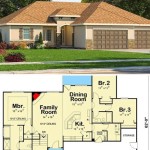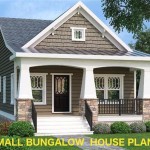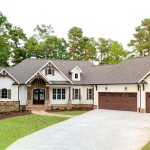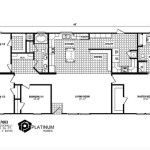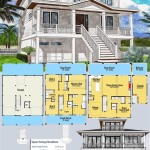Tiny 3 Bedroom House Plans: Maximizing Space and Efficiency
The demand for compact and efficient housing solutions is steadily increasing, fueled by factors such as rising land costs, environmental concerns, and a desire for simplified living. Tiny 3 bedroom house plans represent a compelling option for individuals and families seeking to minimize their environmental footprint and financial burden without sacrificing essential living spaces. These plans focus on ingenious layouts and multi-functional design elements to create comfortable and practical homes within a limited square footage.
Designing a tiny 3 bedroom house requires careful consideration of space utilization, storage solutions, and architectural details. The goal is to create a dwelling that feels spacious and inviting, despite its relatively small size. This article will explore key aspects of tiny 3 bedroom house plans, focusing on effective strategies for maximizing space, optimizing functionality, and creating a comfortable living environment.
Prioritizing Functional Layouts
The foundation of any successful tiny house plan lies in its layout. In the context of a 3 bedroom design, effective space planning becomes even more critical. Open-concept designs are frequently employed to create a sense of spaciousness and improve the flow of natural light throughout the home. Strategically positioning the living, dining, and kitchen areas can blur the lines between these zones, making the entire space feel larger and more connected.
Hallways, which consume valuable square footage, should be minimized or eliminated altogether. Direct access to rooms from central living areas can help to streamline the layout and prevent unnecessary wasted space. Circulation paths need to be carefully considered to minimize congestion and ensure ease of movement within the home.
Bedroom placement also plays a significant role. One common approach is to locate the master bedroom on the ground floor, while the two smaller bedrooms are situated on an upper level, often within a loft space or utilizing a partial second story. This arrangement helps to separate the sleeping areas from the main living spaces, providing a greater sense of privacy and tranquility.
When designing the layout, consider the natural light and ventilation options. Position windows strategically to maximize sunlight penetration and cross-ventilation, which can significantly improve the comfort and livability of the tiny house. Skylights can also be incorporated to bring in additional natural light and create a more airy atmosphere.
The use of a modular design approach can be beneficial in creating a flexible and adaptable layout. Modular units can be pre-fabricated and assembled on-site, allowing for customization and efficient construction. This approach can also simplify future expansions or modifications to the house, if needed.
Implementing Smart Storage Solutions
Storage is a paramount concern in tiny house design. The limited square footage necessitates creative and efficient storage solutions to prevent clutter and maximize usable space. Every nook and cranny should be considered as potential storage space, and multi-functional furniture should be prioritized whenever possible.
Built-in storage units offer a seamless and space-saving solution. These can include custom-designed cabinets, shelves, and drawers integrated into the walls, under staircases, and beneath beds. Creating storage within the structure itself minimizes the need for bulky freestanding furniture that occupies valuable floor space.
Vertical storage is crucial for maximizing vertical space. Tall, narrow shelving units can be used to store books, linens, and other items without taking up too much floor area. Wall-mounted shelves and cabinets can also free up floor space and keep items organized and easily accessible.
Under-bed storage is another valuable option for stowing away items such as extra bedding, seasonal clothing, and other belongings. Platform beds with built-in drawers or lift-up mechanisms provide ample storage space without increasing the footprint of the bed itself.
Multi-functional furniture is essential for maximizing space and efficiency. Convertible sofas that transform into beds, tables that fold down from walls, and ottomans with storage compartments can serve multiple purposes, saving space and reducing clutter. These pieces of furniture help to optimize the functionality of the home and ensure that every space is utilized effectively.
Consider incorporating overhead storage in areas such as the kitchen and bathroom. Cabinets that extend to the ceiling can provide additional storage space for infrequently used items. Implementing a well-organized pantry system can also help to keep the kitchen tidy and functional.
Outdoor storage solutions should also be considered, particularly for items such as gardening tools, sports equipment, and outdoor furniture. A small shed or storage container can provide a convenient place to store these items without cluttering the interior of the home.
Optimizing the Kitchen and Bath
The kitchen and bathroom, though often the smallest rooms in a house, present significant opportunities for space optimization in tiny house designs. Careful planning and innovative design solutions are essential to create functional and comfortable spaces within a limited area.
In the kitchen, compact appliances are essential. Consider using a smaller refrigerator, a combination microwave/convection oven, and a two-burner induction cooktop. These appliances can save significant space without sacrificing essential cooking functions. Integrated appliances that blend seamlessly into the cabinetry can also create a cleaner, more streamlined look.
A galley-style kitchen, with cabinets and appliances arranged along two parallel walls, is a common and efficient layout for tiny houses. This layout maximizes counter space and storage while minimizing the overall footprint of the kitchen. Another option is to create a U-shaped kitchen, which provides ample workspace and storage within a compact area.
Fold-down tables and countertops can provide additional workspace when needed and can be easily stowed away when not in use. These versatile surfaces can serve as dining tables, food preparation areas, or even temporary desks.
In the bathroom, consider using a smaller sink and toilet to save space. A corner sink can be an excellent option for tight spaces, and a wall-mounted toilet can create a more open and airy feel. A shower-tub combination can maximize functionality while minimizing space consumption.
Wall-mounted cabinets and shelves can provide ample storage space in the bathroom without taking up valuable floor area. Consider using mirrored cabinets to create the illusion of a larger space and provide additional storage for toiletries and other items.
Proper ventilation is crucial in both the kitchen and bathroom to prevent moisture buildup and maintain air quality. Installing a high-quality ventilation fan can help to remove excess moisture and odors, creating a more comfortable and healthy living environment.
Leveraging Vertical Space With Lofts
Lofts are a hallmark of tiny house design, especially when aiming for three bedrooms. They offer a practical solution to maximize living space by utilizing the vertical dimension. In a 3 bedroom tiny house, lofts often accommodate two of the bedrooms, freeing up the ground floor for living, dining, and kitchen areas, and potentially a master bedroom.
Access to lofts is typically achieved via stairs or ladders. While ladders offer a smaller footprint, stairs provide a safer and more comfortable option, particularly for daily use. Stairs can also incorporate built-in storage, making them multi-functional elements within the design. Consider the angle and width of the stairs to ensure they are both safe and space-efficient.
Loft bedrooms require careful consideration of ceiling height. While full standing height is often not achievable within a tiny house loft, sufficient headroom for sitting and sleeping is essential. Ensure building codes are followed regarding minimum ceiling height requirements.
Natural light and ventilation are crucial in loft bedrooms. Incorporate windows or skylights to bring in natural light and provide ventilation. Proper insulation is also essential to regulate temperature and ensure comfort, especially in warmer climates.
Loft railings are necessary for safety. Choose railings that are both functional and aesthetically pleasing, complementing the overall design of the tiny house. Transparent materials, such as glass or acrylic, can maintain an open feel while providing fall protection.
Embracing Minimalism and Decluttering
Living in a tiny house inherently necessitates a minimalist lifestyle. Reducing the amount of belongings is crucial to prevent clutter and maximize usable space. Before moving into a tiny house, it is essential to declutter and pare down possessions to only the essentials.
A simple rule of thumb is to only keep items that are frequently used or that hold sentimental value. Unnecessary items should be sold, donated, or discarded. Evaluating the functionality and necessity of each item can help to make informed decisions about what to keep and what to let go.
Adopting a "one in, one out" policy can help to prevent clutter from accumulating over time. For every new item that is brought into the house, an old item should be removed. This practice helps to maintain a balance and prevent the house from becoming overcrowded.
Regularly decluttering is essential for maintaining a tidy and organized home. Make it a habit to go through belongings on a regular basis and remove any items that are no longer needed or used. This simple practice can make a significant difference in the overall feel and functionality of the tiny house.
Embracing a minimalist aesthetic can also enhance the visual appeal of the tiny house. Simple, clean lines and neutral colors can create a sense of spaciousness and tranquility. Avoiding excessive ornamentation and clutter can help to create a more relaxing and inviting environment.
Ultimately, the key to successful tiny house living is to embrace simplicity and prioritize experiences over possessions. By focusing on the things that truly matter, individuals and families can create a fulfilling and rewarding lifestyle within a smaller footprint.

Spacious Design Ideas For Three Bedroom Tiny Homes The Life

Spacious Design Ideas For Three Bedroom Tiny Homes The Life

House Plans Robin 1 Linwood Custom Homes Tiny One Story Small

Small Home Plan With 3 Bedrooms House Floor Plans Bungalow Simple

Prefab Small Homes On Instagram A Frame House Plan No 86950 By Familyhomeplans Com Total Living Area 1272 Sq Ft 3 Bedrooms And 1 5 Bathrooms Interior Plans

New Tiny House Plans Blog Eplans Com

Spacious Design Ideas For Three Bedroom Tiny Homes The Life

The Bungalow Plus Extra 3 Bedrooms 2 Bathrooms 1022 Sq Ft Tiny Home Steel Frame Building Kit Adu Bgp3b2b1022

27 Adorable Free Tiny House Floor Plans Craft Mart

A Three Full Bed Tiny House Design Floor Plan With Twin And Queen Upstairs No Storage Loft Plans Small

